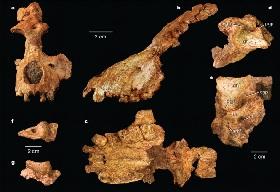Using AI to control energy for indoor agriculture
30 September 2024
Published online 19 July 2010

The discovery of a fossil primate in the desert near Makkah in Saudi Arabia may fill a gap in the evolutionary history of primates and help detail when hominoids and apes diverged from Old World monkeys.
An expedition led by the Saudi Geological Survey in Saudi Arabia and the University of Michigan, United States, unearthed a well-preserved fossil of a partial cranium of a primate from the early Oligocene epoch. The new species, named Saadanius hijazensis, is a medium-sized Catarrhine, a group that includes humans, great apes and Old World monkeys. The animal once weighed 15 – 20 Kg approximately 29 – 28 million years ago.
The fossil includes a forehead, nose and some dental features, but is missing parts of the eye sockets and the braincase. Another piece from the ear region was also preserved. It is the most substantive evidence found up till now of Catarrhines from the early Oligocene through to the late Oligocene period. The fossil emphasizes the importance of Afro-Arabia as the centre of early Catarrhine evolution.
Based on genetic studies, it was thought that Old World monkeys diverged from apes and hominoids between 34.5 and 29.2 million years ago. However, the previously known primate fossil record suggests the split between the two major groups happened between 25 – 23 million years ago.
This new fossil, which belongs to the closest common ancestor of Old World monkeys and apes, is evidence that the split happened around the date suggested by the fossil records, between 29 – 28 and 24 million years ago.
This new discovery should also open a new field of research and exploration on the Arabian Peninsula, as the researchers plan to return to further explore the area where they dug up the fossil.
doi:10.1038/nmiddleeast.2010.177
Stay connected: